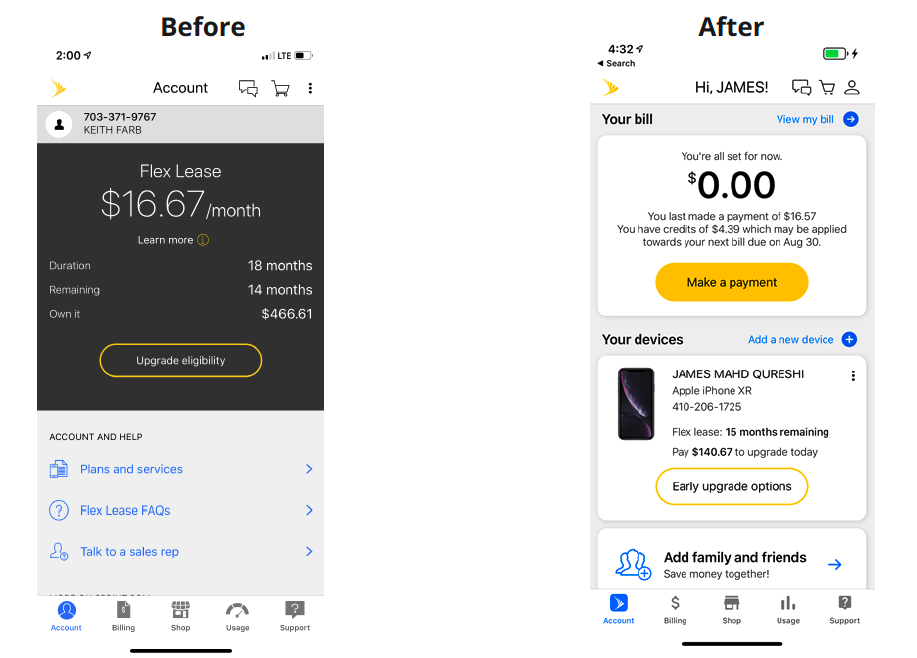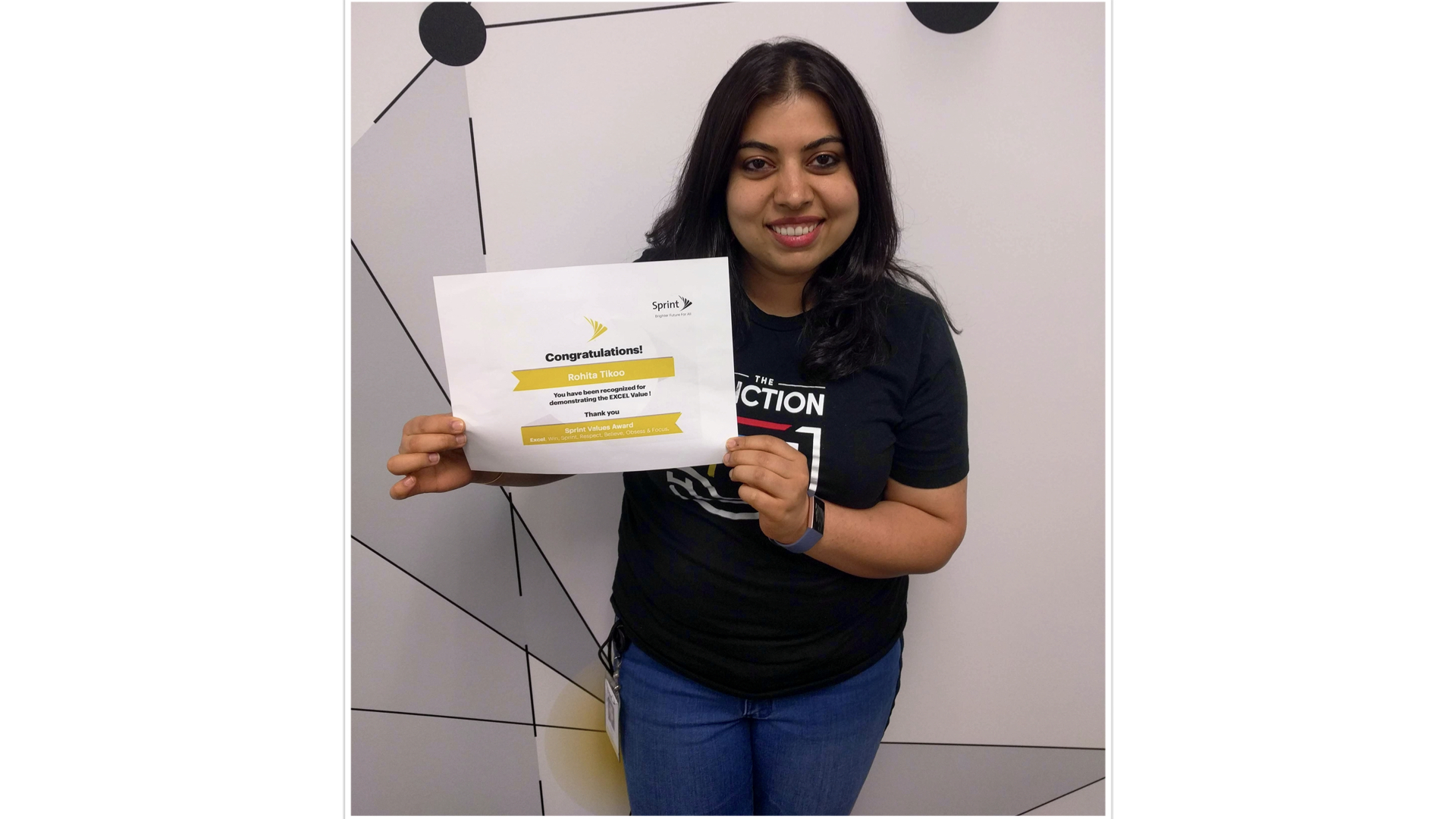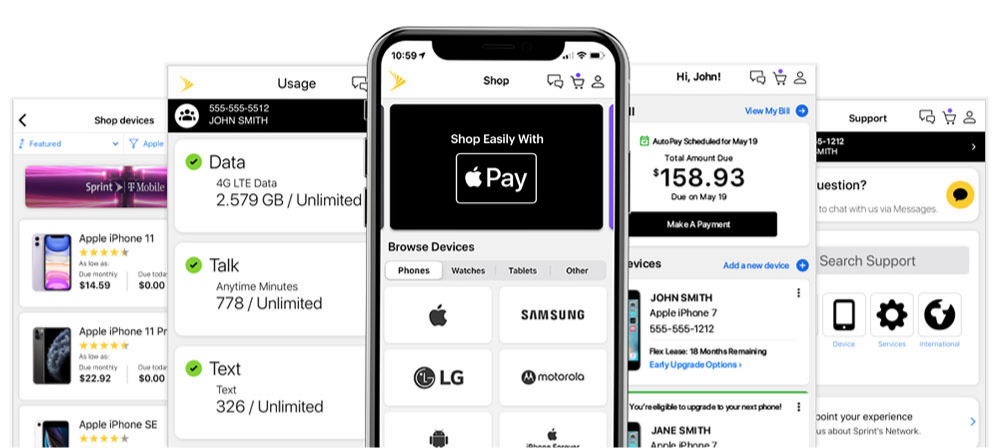

I was leading the UX Design Research efforts for (B2C) Sprint.com and My Sprint mobile app
(Dec 2018 - Jul 2020).
I have worked on multiple UXR projects at Sprint and each having its own unique challenges, but for this case study I will be focusing on the My Sprint app account dashboard re-design project.
In early 2019, the My Sprint app product management team observed that low number of orders were being placed from the app inspite of the Add a line, buy phones and upgrade features being available in the app. The UX Design and Product management team had a hypothesis that the My Sprint app account dashboard design is not intuitive which maybe the cause for low conversion through app. Hence the UX Design team invested in redesign of the My Sprint account dashboard.
The challenge here was to re-design the existing account dashboard such that is intuitive for our users and promotes shopping via the app.
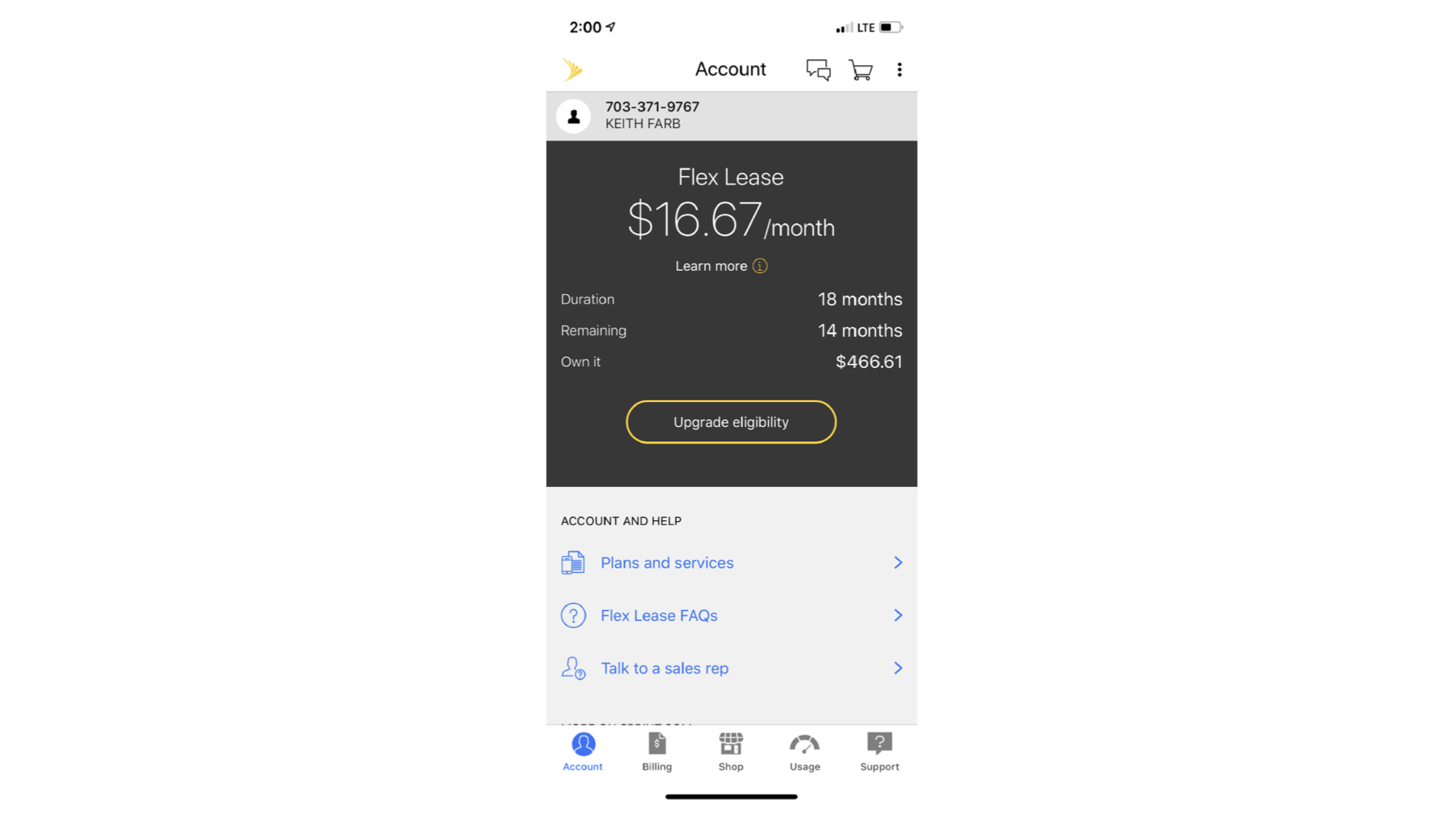
In-person Design Thinking workshops with cross functional team (UX,Product Managers, Marketing) over a couple of weeks. These workshops were activity-based and organized according to the three phases of the design thinking process:
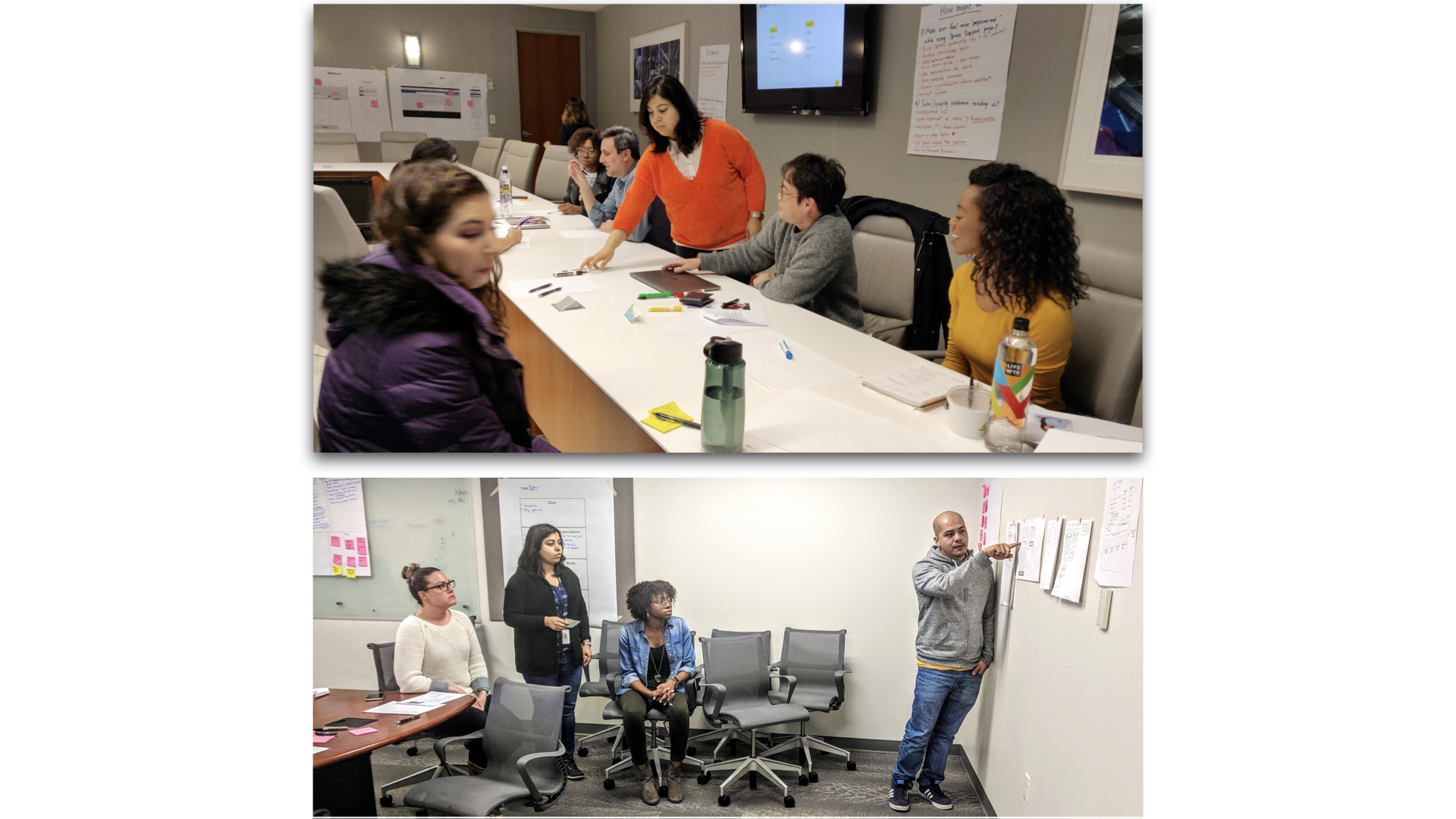

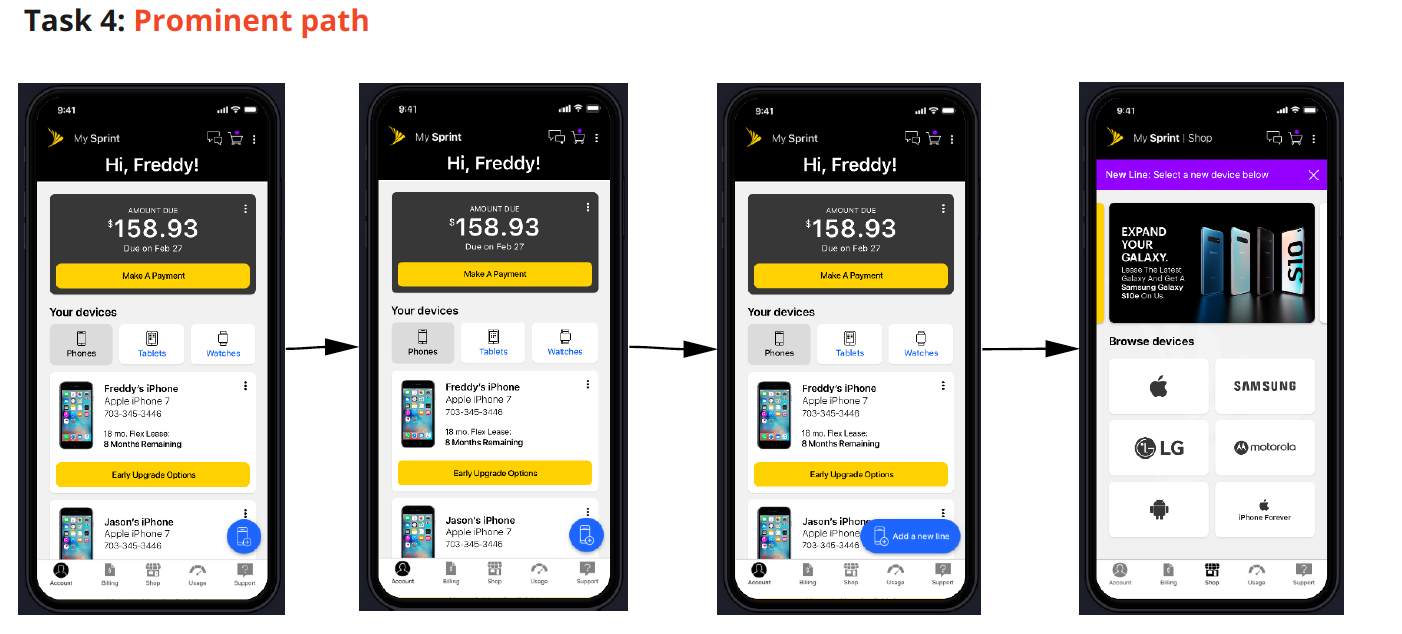
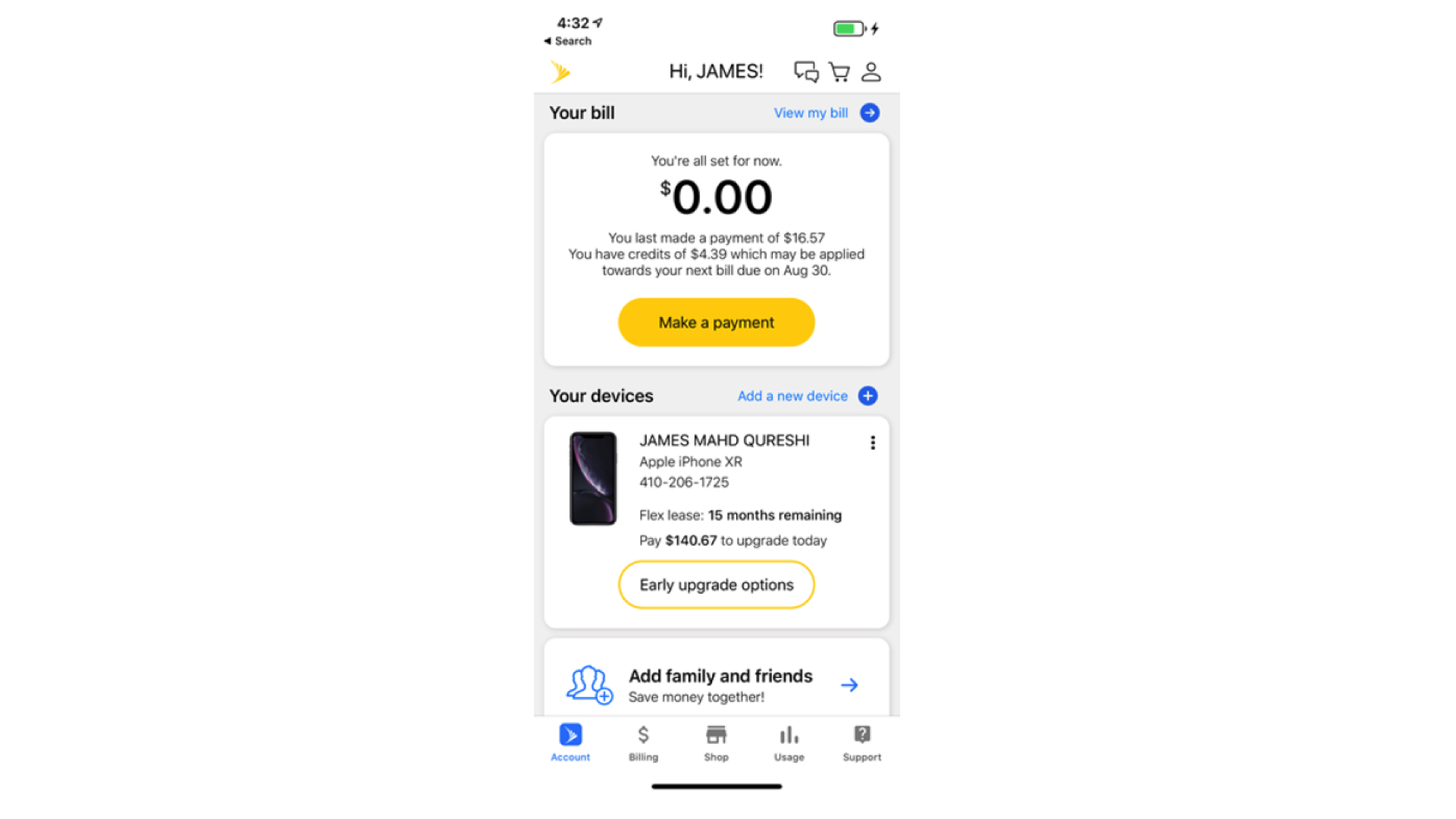
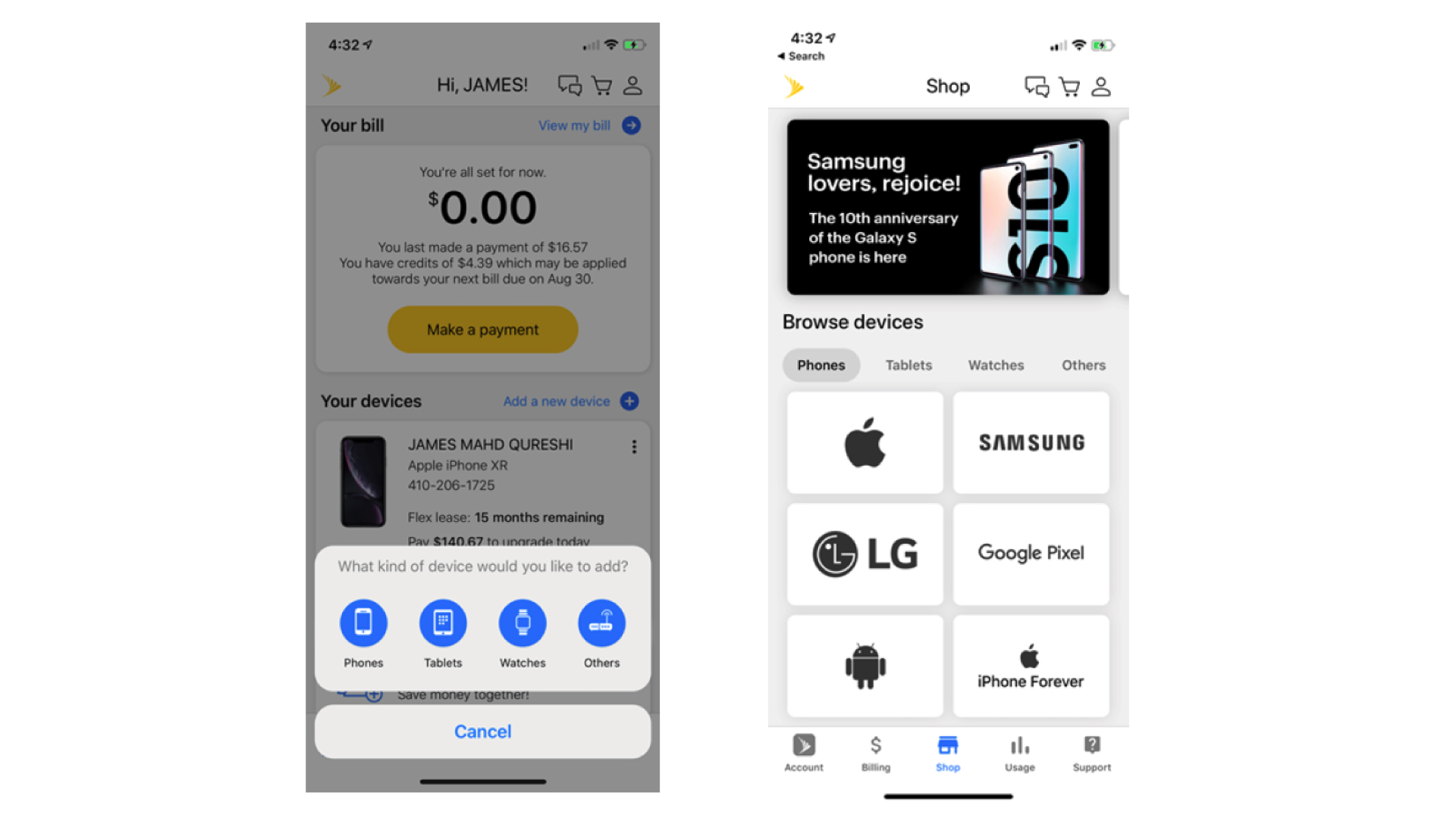
“Better Together” was blending of lean UX and Agile -seemingly different disciplines, mindsets, even objectives of the same product only becomes strengthened as they participate in interdependence throughout every stage of the process. In the give and take collaborative creation of the idea through to the thing itself, each participant learned from the other SME (subject matter expert). And each gained a deeper understanding of the why’s involved. Firsthand experience by all cross functional teams removes the need for documentation to lead and dramatically reduces the “lost in translation” phenomena. We observed that when the teams played together in each other’s worlds – the divisive behaviours end, the camaraderie and buy-in increased and a joint passion for the projects and product enabled us to deliver a much higher quality experience.
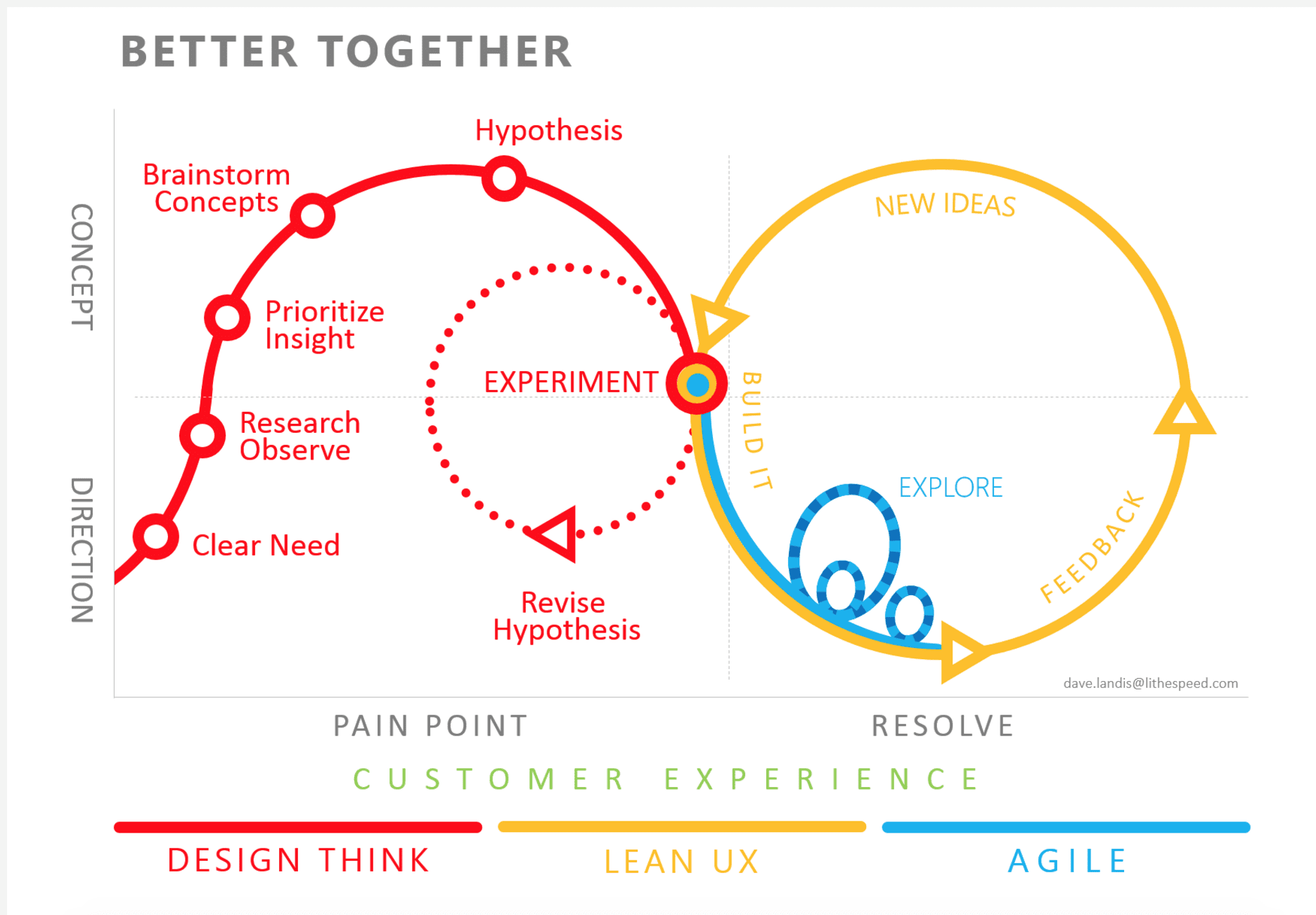
It can be viewed here and downloaded from App store/Google Play.
